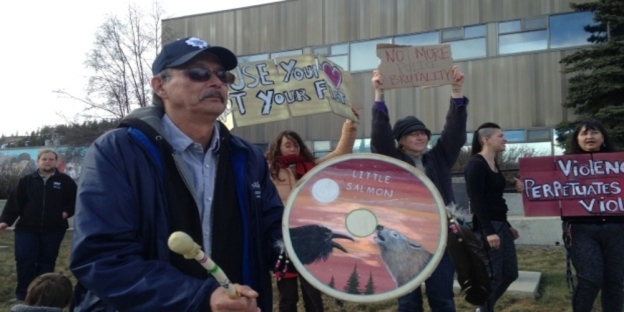The Assembly of Manitoba Chiefs (AMC) Grand Chief Arlen Dumas would like to see changes in the Police Services Act (PSA) following the recent death of a First Nations man charged with assaulting a police officer.
Brian Halcrow from Tataskweyak Cree Nation was arrested by Thompson RCMP for throwing a hat at Const. Jeremiah Dumont-Fontaine in June 2019. Following the incident, Halcrow committed suicide after he was charged with three counts of assaulting an officer and causing a disturbance.
New video surveillance, obtained by the Independent Investigations Unit (IIU), shows the hat flew past Dumont-Fontaine and hit the ground. This indicates that the assault may not have occurred.
“This is yet another disturbing and tragic report of a First Nation citizen being brutally mistreated by officers, which may be a direct contributing factor in his decision to take his own life,” said Dumas in a press release.
In November last year, an independent review of the PSA came up with 70 recommendations to improve policing and police oversight in Manitoba.Among the recommendations were changes to the sections of the legislation that govern the IIU.
Among the recommendations were changes to the sections of the legislation that govern the IIU.
In this case, Dumont-Fontaine is protected by the provisions of the PSA that do not compel the subject officer to hand over notes about an incident to the IIU investigating officers or to be interviewed about the matter.
Due to this, IIU has decided to take law enforcement to court to gain access to Dumont-Fontaine’s report. Arguments over the disclosure of the occurrence report on the Halcrow incident will be heard in Manitoba’s Court of Queen’s Bench on March 5.
“Unless this is changed in legislation, the IIU will continue to play a part in the disproportionate rates of First Nations arrests and incarcerations, and subject officers will continue to be found not responsible for acts of brutality and/or justified in the use of deadly force,” said Dumas.
Dumas urge the Province of Manitoba to implement the recommendations of the final report on the PSA to prevent and reduce similar tragic events from occurring in the future.
As well, changes to the PSA could bring closure and better administration of justice for many First Nation citizens such as Halcrow.
“It is disturbing and emotionally exhausting for First Nations in Manitoba to be continually exposed to reports and alleged incidents of the use of excessive force perpetrated on First Nations by police officers, conservation officers, and correctional officers in this province,” said Dumas.
“The PSA legislation is a contributing factor, and I continue to urge the Province and specifically Manitoba Justice to implement its recommendations, in partnership with First Nations in the spirit and intent of reconciliation and for a measure of justice for those First Nations lives lost as a result of police misconduct.”
Justice Minister Cameron Friesen said that the province has committed to introducing legislation this year that will strengthen the Manitoba IIU.
“We are sincerely interested in facilitating changes to the IIU that are designed to increase transparency and confidence and better reflect the communities it serves. These efforts are well underway and we are committed to that path,” he said on Wednesday.
By Nicole Wong • Winnipeg Sun Posted: Mar 03, 2021.













